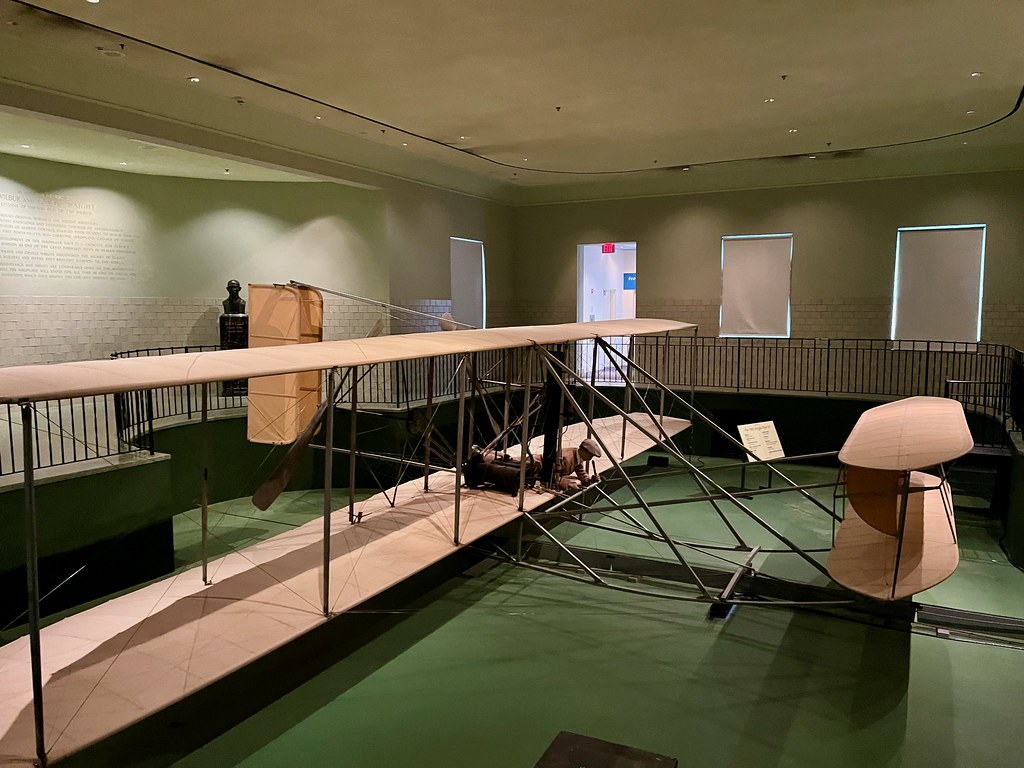When people have asked, I’ve told them with a straight face that we didn’t go to Daytona for Spring Break, no, we went to Dayton. As in Ohio. As in probably the least likely Spring Break destination in the United States. We managed to avoid warm weather, sandy beaches, and southern hospitality for… a bunch of airplanes? But that’s where our younger kid wanted to go so that’s where we drove. He’s about to graduate from high school and he just began a multiyear process that will hopefully result in a commercial pilot license. Combine that with his lifelong passion for aviation and Dayton began to make a little more sense. So that’s how we spent a week in Dayton immersing ourselves in everything aeronautical.
Well, I also snuck in a few of my peculiar interests like county counting and brewery visits too. It wasn’t completely altruistic. However, significantly more than half of the trip focused on aviation in one form or another.
Let’s start at the beginning with the Wright Brothers, Orville and Wilbur. Everyone knows the story: they designed the first engine-powered aircraft and flew it at Kill Devil Hills near Kitty Hawk, North Carolina in 1903. Their groundbreaking airplane now resides at the Smithsonian’s Air and Space Museum in Washington, DC. Nonetheless, almost everything else they ever achieved took place in Dayton and they left their fingerprints everywhere around town.
Dayton Aviation Heritage National Historical Park
The United States National Park Service recognized this legacy at Dayton Aviation Heritage National Historical Park. So much heritage exists nearby that the park stretches across multiple locations in and around Dayton. We visited three of the units and each one included a solid Wright Brothers connection.
Wright-Dunbar Interpretive Center

We should probably start with the Interpretive Center near downtown (map). It ties the Wright Brothers story to the scattered properties and puts them within a larger context. Before the Wrights designed airplanes they built bicycles, and before that they operated a printing business. The complex included both the site of their bicycle shop and their print shop.
But who was the Dunbar of Wright-Dunbar? It referred to renowned African America poet, Paul Laurence Dunbar who also resided in Dayton during that same basic time period. His connection to the Wright Brothers seemed pretty tenuous, based upon his use of Wright’s print shop to publish a newspaper. Dunbar certainly deserves recognition although it seemed strange to append him to the Wright Brothers story. The National Park Service should aspire to greater recognition, and dedicate a separate park for Dunbar.
The Wright Brothers flyer on display was a replica of their 1902 Glider. It represented an era when the brothers were still perfecting their designs before their groundbreaking powered flight.
Wright Brothers Aviation Center

The aviation center unit — officially the John W. Berry, Sr. Wright Brothers National Museum (map) — actually sat within Dayton’s Carillon Historical Park. So visitors need to pay admission and enter Carillon in order to visit the Wright Brothers, not that it’s much of a problem. Carillon Historical Park is really interesting all on its own!

The aviation center at Carillon Park bills itself as having “more Wright artifacts on display than any other place in the world“. It stretches into several sequential buildings stuffed with numerous displays. This included a very rare Wright Brothers bicycle which looked surprisingly modern. I guess nobody needed to change the basic design once it became known. I wouldn’t bat an eye if someone peddled down the street on one of these.
The Wright Brothers flyer on display was an original 1905 Wright Flyer III. It is so meaningful that it’s the only airplane designated as a National Historic Landmark. I generally wouldn’t think of an object as a landmark but I don’t make the rules and the National Park Service didn’t consult me. Regardless, the Wright Brothers considered this their most important aircraft because it was the first one they designed for a larger practical purpose.
Huffman Prairie Flying Field Interpretive Center

While the first powered flight took place in North Carolina, the Wright Brothers actually honed their skills back home in Ohio. They also set up base at Huffman Prairie on the outskirts of Dayton after the historic 1903 flight. There they tested new designs, improved their technique, and started a flying school.
Unfortunately the Interpretive Center hadn’t opened for the season yet when we visited. We did see the memorial designed by the renowned Olmsteds and gazed upon the prairie from the top of Wright Brothers Hill (map).
From the Air Force Collection

I’ll talk about the Museum of the Air Force later, but for now I’ll focus on one tiny relevant portion: the Wright Brothers’ 1909 Military Flyer (map). The airplane itself is a replica although the engine, propellers and chains were originals donated to the museum by the family. So this one is a hybrid; partially real and partially reproduction. The first airplane purchased by the United States government was a Military Flyer and it would remain the Army’s sole airplane for a couple of years, assigned to the Signal Corps.
I’ve seen Ohio assert its claim as the “Birthplace of Aviation” before and frankly I tended to discount it. I figured it was a lot of sour grapes used to counteract North Carolina’s “First in Flight” assertion. However, after my week in Dayton, I can more clearly appreciate Ohio’s side of the story. Kitty Hawk was a fixed point in time. The real work, both before and after the famous flight, took place in Ohio.
I will say that we were all pretty overwhelmed by the abundance of Wright Brothers information by the end of the week.
Articles in the Dayton, Ohio Series
See Also: The Complete Photo Album on Flickr

Leave a Reply